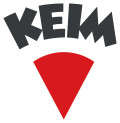
COCHENILLE
Η καρμίνη είναι μια βαθιά, φωτεινή κόκκινη χρωστική ουσία που εξάγεται από ένα έντομο, το κοχενίλο. Oνομάζεται επίσης κόκκινο κοχενίλε, κοχενίας ή με μεγαλύτερη ακρίβεια βυσσινί, καρμίνη, πορφύρα ή αίμα του Αγίου Ιωάννη.. Στα αρχαία βαφικά βιβλία, το καρμίνιο απλώς ονομάζεται κοχενία.
Παράγεται από ένα μικροσκοπικό έντομο του Μεξικού και ήταν πολύ σεβαστό των Ατζεκών στην αραχαιότητα. Αυτό το έντομο παρασιτίζει το κακτό Opuntia και παράγει το καρμινικό όξυ (cochenille) για να υπερασπιστεί τον εαυτό του. Μεταφέρθηκε στην Ευρώπη τον δέκατο έκτο αιώνα μετά την ανακάλυψη της Νότιας Αμερικής από τους Ισπανούς. Το έμποριο του ήταν να έχει πιό αξίο από το χρυσό για την Ισπανία. Εξαπλώθκηε γρήγορα σε όλη την Ευρώπη,
Το κογχικό τσιπ, μικροσκοπικό έντομο του Μεξικού, παρήγαγε επίσης ένα διαφανές κόκκινο χρώμα, αλλά πολύ διαφαινόμενο, πολύ σεβαστό Αζτέκων. Αυτό το έντομο παρασιτίζει το κάκτο γένος Opuntia (Barbary σύκο), και παράγει καρμινικό οξύ για να υπερασπιστεί τον εαυτό του. Το έθνος Aztec Mixteco Zapotec καλλιέργησε ήδη οπτούντες για το κοχενίλε πριν από την άφιξη των Ισπανών. Μεταφέρθηκε στην Ευρώπη τον δέκατο έκτο αιώνα μετά την ανακάλυψη της Νότιας Αμερικής. Αντικατέστησε το kermès γύρω από το 16862.
https://www.abio.gr/…/skones-%28hrosti…/1038-kokkina-hromata
“
Coccus cacti, C.I. Natural Red 4 synonyms: cochenille Cochineal are silver-white-pink pieces. Cochineal may be used for dying of textiles, such as silk, cotton, wool. Cochineal is obtained from the females insects known as Coccus cacti, which infest cactus (e.g. Opuntia coccinellifera, Nopalea cochenellifera). Cochineal insects, lac dye and kermes, are of a type commonly called "shield-louse", as they are small and round with a shield on the back. After the larva stage, the few millimeter large insects remain unmovable on the plants and nourish the plant juice. The insects are harvested by brushing them from the plants several times per year. The main components of the cochineal insects are carminic acid, kermes acid and laccainic acid D. Chemically these three acids belong to the group of anthraquinones. In ancient times Asiatics, who were able to observe the life cycle, knew that lac was a substance of animal origin, so various names meaning "little worm" were developed for lacca and similar insects. To Europeans, however, lac appeared to be part of the sticks on which it was imported, thus the name coccus (berry or acorn) was attached to lac and later to the live insects, a misnomer for which the ancient Greeks and Romans are held responsible. Discussion on the confused nomenclature connected with a number of red pigments has been undertaken by other writers. The origin of the links between Latin coccus and granum and English grain (all of which are associated with the idea that lac was a seed or berry), and the links between kermes and vermiculum (both meaning little worm) are to be found during the medieval period and they are ably discussed by Thompson. When continuing the discussion with special reference to seventeenth-century England, it is possible to ignore the name grain, which, apart from its specialised use in textile dyeing, was obsolete. Nevertheless, the seventeenth century presents an additional problem in that the words cinnabar and sinopia were wrongly associated with the name sinoper lake, which may have been a development of the medieval name cynople (Latin sinopia) mentioned by Thompson. Sinoper lake and the variation topias are to be found in sources dating from the late sixteenth and early seventeenth centuries. The composition of both is uncertain; Thompson states that medieval cynople was a composite lake, and it seems that sinoper may have been similar, for that mentioned in B.M. MS. Sloane 1394 was derived from the dye in scarlet cloth. Parkinson's herbal contains an explanation that lac is formed by "winged ants" which settle on trees, that the substance is sometimes imported on sticks (stick lac), or, after it has been cleared from the sticks and melted, it can be imported in cake form, or in thin pieces (shellac). In order to amplify Parkinson's description, it is worth adding a few comments taken from a modern authority. When the dead insects are stripped from the branch and crushed, the seed or grain lac, as it is then called, is immersed in hot water to separate the grains from the coloring matter, the liquid is evaporated, and the residue which remains may be then formed into cakes for use as a dye. It was worth importing untreated stick lac, because it was capable of providing a greater quantity of coloring matter than the cakes. Eighteenth century customs records support this view, for, in 1700, 25.543 pounds of stick lac and 26.440 pounds of shellac were imported. In later years the quantity was twice that of stick lac, but considerable quantities of both were imported; in 1760, stick lac amounted to 170.780 pounds as compared with 349.630 pounds of shellac. Naturally, it was not all used as a dye, for lac had other uses in lacquers and varnishes. “
 ΤΟ ΚΑΛΑΘΙ ΜΟΥ (0)
ΤΟ ΚΑΛΑΘΙ ΜΟΥ (0) 










 ΤΗΛ 210-7707587
ΤΗΛ 210-7707587